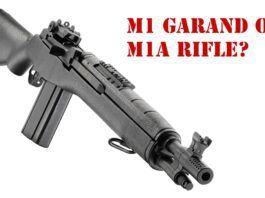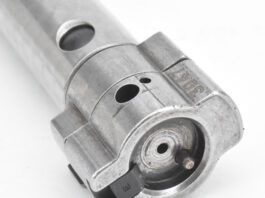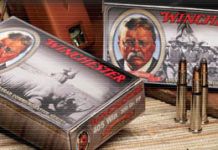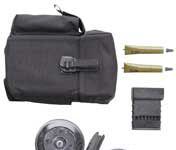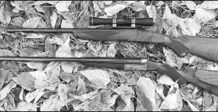Bad Brief: The Bush DOJ shoots at the Second Amendment
Firearms Industry Statement on Passage of NICS Legislation
NASR, EPA Forge Agreement
Hunters, Shooters to Top $4 Trillion in Lifetime Spending
Dpms Rfa2-ap4a Patrol Carbine
This Is A Basic No-nonsense Carbine At A Good Price. A Little Trigger work And The Scope Of Your Choice Backed By The Mangonel Rear Sight would Make It Hard To Beat.
Bureau of Alcohol, Tobacco, Firearms and Explosives Reform and Firearms Modernization Act of 2007
Winchester’s Theodore Roosevelt Ammunition
Arizona G&FC Meeting Discusses Spent Ammo
Konus Unveils M-30 Scopes
Brownells New Product: Beta 100-Round Capacity For Enhanced Firepower
Ruger No. 1 Medium Sporter, 9.3x74r
The 9.3x74r Ruger Was A Handsome Package With Classic Lines. accuracy Was Excellent With Our Handloads. This Was A Handy Rifle with Everything Done Well.
Double Rifle Versus Single Shot
Given adequate funds, which would you prefer for all your general medium-game hunting, a single shot, or a good double rifle? This question has been around a good many years, particularly in Africa in the days before one could get good yet inexpensive bolt-action rifles. Today the question might be a bit different. Which one would make the better investment? Or, which would give greater shooter satisfaction? Given the great disparity in prices of good examples of single and double loaders, would there be any real benefit to owning one type of rifle more than another?
Sturm, Ruger & Co. chambers a most unusual (to American shooters) mid-power cartridge in the Ruger No. 1, the 9.3x74R. It's a rimmed cartridge commonly loaded with bullets of 0.366-inch diameter in weights from 232 to 286 grains. This cartridge has power a shade under that of the .375 H&H Magnum. We procured a Ruger No.1 ($1030) in this caliber. Ammunition is not available everywhere, as we found to our chagrin.
We were fortunate to have the loan of a fine Manton double rifle (about $10,000) in this caliber, which not only used the same bullet size as the 9.3x74R, but put out its 320-grain bullets at essentially the same velocity as our handload for the Ruger—though at vastly reduced pressure. While a single shot like the Ruger has the immense advantage of being able to use a variety of bullet weights, the fine double is generally regulated for only one load, with either soft-nose or "solid" bullets. But one load per rifle is generally adequate, as many experienced hunters have found over the years.
Norma, RWS, Sellier & Bellot, and perhaps one or two others make ammo for the 9.3x74R. Hornady has promised to make some for several years, but none is yet forthcoming. We were unable to find ammo anywhere in time for this report, so we resorted to handloading. We used jacketed and cast bullets designed for the various .360-caliber British cartridges. Specifically, we loaded 320-grain bullets from Hawk, Inc., and from Woodleigh, and 275-grain cast gas-checked bullets from Mt. Baldy, into new RWS cases. Nosler also makes several bullets in this size for handloading. We don't claim we got the maximum results out of the 9.3x74R. We stopped when everything was working well. The Manton was easier to feed. Its owner provided all the ammunition, featuring Woodleigh's 320-grain bullets, same as we used in the Ruger, and both Bell and Bertram brass.
So how did these two compare? In several important ways there's no comparison. The Ruger has a list price of $1030, and almost any dealer can order you one. The Manton, or anything like it, will set you back today right around $10,000. And you probably won't find a decent one for sale, though you might find several clunkers. Let's see what we found out about each of them.


























